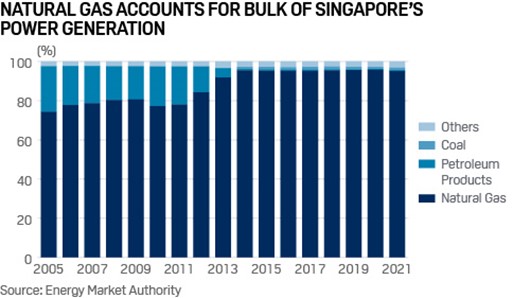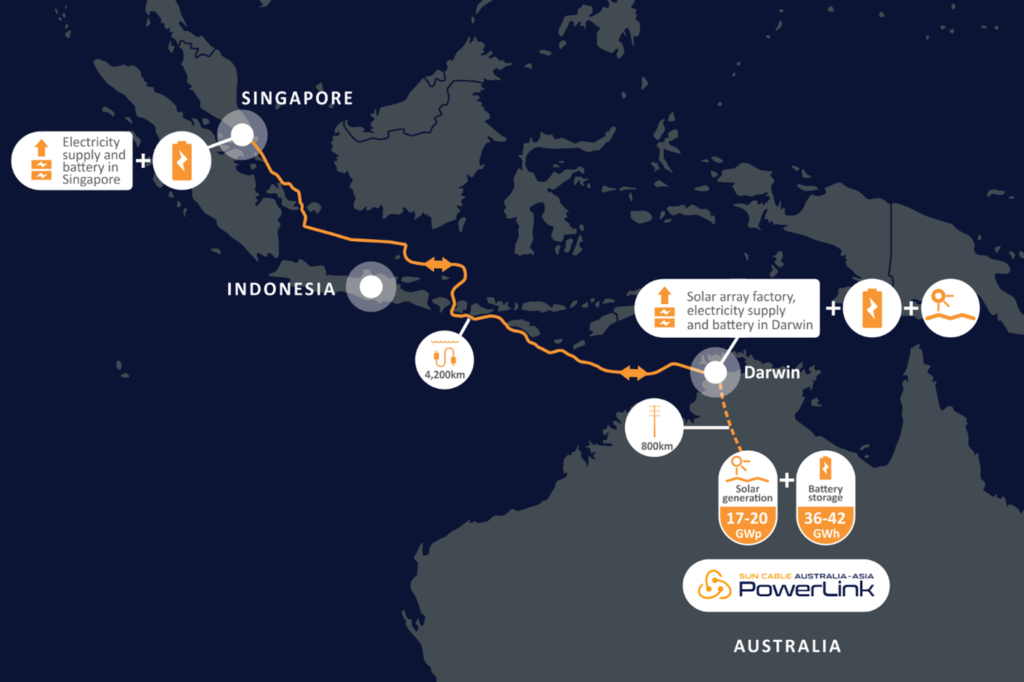Energy Transition in Singapore: A Renewable Energy Leader in Asia
Source: South China Morning News
14 February 2022 – by Eric Koons Comments (0)
As far as Asian countries go, Singapore is at the forefront of the energy transition. If you look at Asian energy transition, Singapore’s energy transition is way ahead. The World Economic Forum (WEF) ranks Singapore as 1st in Asia and 21st globally, based on WEF’s Energy Transition Index. This Index is the way WEF tracks and scores countries based on the performance of their energy system. It bases the score on three factors: economic development and growth, environmental sustainability, and energy security and access. In short, Singapore’s progress in the energy transition is leading the country towards a more sustainable future.

The Global Energy Transition
As the global energy transition grows urgently, countries are under sizeable public pressure to accelerate their shift to clean energy. Currently, Western Europe leads the world in the WEF’s rankings. For example, Sweden, Norway, Denmark, Switzerland and Austria are the top five performers on the Energy Transition Index for 2021. Uruguay and New Zealand join Singapore as the only non-European countries in the top 21.
What is Fuelling the Energy Transition in Singapore?
Singapore’s small size and geographic location leave it without many resources for producing energy. This puts the country in an insecure position regarding energy. Consequently, Singapore imports a vast majority of its energy to satisfy the high demands of the Southeast Asian financial hub.
What is Singapore’s Main Source of Energy?
The main sources of energy in Singapore are petroleum, natural gas, coal and renewables. Petroleum represents 86% of Singapore’s energy consumption, with the remaining energy consumption from natural gas (13%). Coal and renewables account for the remaining 1%.
Despite a lack of natural resources, Singapore’s location has made it an important hub for trade and transport in the region—today and historically. It is a vital petroleum refining, storage and distribution centre for global trade. In fact, Singapore ranks at five in the largest refinery and export hubs globally.
The majority of crude oil Singapore imports is from the UAE, Qatar, Saudi Arabia and Kuwait. And most of the exports of refined oil are sent to Malaysia, Indonesia, Australia and China.
However, Singapore’s electricity has a lower carbon footprint than its reputation for oil and petroleum may suggest. 95% of Singapore’s electricity is generated from natural gas. But, natural gas is by no means the cleanest source of electricity. Yet, it is an important intermediate source while the region transitions from dirty fossil fuels to clean energy.

What Sustainable Strategies Does Singapore Use for Power?
Singapore recently announced its plans to have 30% of its electricity come from low-carbon sources by 2035. This strategy will likely include a combination of natural gas, carbon capture, low-carbon imports and renewable energy to ensure energy security. Additionally, other low-carbon alternatives like green hydrogen should hit the market within five years. They are also planning to give more incentives to the power sector and power generation companies to increase power plants’ energy efficiency.
Unfortunately, Singapore lacks many natural assets needed for mass renewable energy generation. To access renewable energy, they have commercial wind turbines, but the generally calm wind conditions in the area make it difficult to generate much power. Other clean energy sources are either impossible or inefficient for generating energy, like hydroelectric, geothermal, tidal, nuclear and biomass.
Regional Power Grids and Situation of Solar Energy Produced Domestically
Solar power is the chief renewable energy Singapore can harness, but the country’s lack of available land makes it difficult for large-scale solar farms. Despite the limitations for renewable energy production, Singapore aims to harness at least two gigawatts-peak of solar power by 2030—enough to power about 350,000 homes. Additionally, for low-carbon electricity, it aims to develop regional power grids.
Renewable Energy Sources and the Energy Transition
Ultimately, Singapore’s strategy for the future will rely heavily on importing clean energy and is already working on several low-carbon import strategies.
What is Singapore’s Renewable Energy Strategy Moving Forward?
The Singaporean Government notes that a transition away from traditional energy sources may create uncertainty during the initial stages. Additionally, it will likely be more expensive. Yet, government officials are not straying from their commitments. For example, Singapore will no longer accept coal-generated electricity into its power grid as part of the transition.
Plans to ramp up Singapore’s solar power generation are also a step in the right direction. But even with the added investment in solar, only about 3% of the country’s electricity will be generated by solar power when reaches its potential.
Additionally, Singapore is constructing a 4,200km underwater cable between Darwin, Australia, and Singapore to provide the city-state with enough solar power to meet about 15% of its energy demand. Additional imports will also come from a solar farm in Pulau Bulan, Indonesia. This project would import 100 megawatts of clean electricity.

Singapore is Overcoming their Renewable Energy Limitations
Despite the difficulties in generating its own renewable energy, Singapore is doing what is necessary to clean up its energy grid.
Their use of natural gas, while not emission-free, is putting them on the track to a clean power grid. One general concern is that countries will get complacent with their use of natural gas and never make the complete transition to renewable sources.
However, Singapore’s stated commitments to change and the actions made to facilitate those commitments show that the city-state is serious about its energy transition. Compared to its neighbours, it is easy to see why Singapore is ahead of the curve and placed them at the forefront of Asia’s energy transition.
Go further with Energy Transition
This article is part of the global energy transition guide.
We will discuss more related topics in the following articles, such as the energy transition in Asia.

by Eric Koons
Eric is a passionate environmental advocate that believes renewable energy is a key piece in meeting the world’s growing energy demands. He received an environmental science degree from the University of California and has worked to promote environmentally and socially sustainable practices since. Eric’s expertise extends across the environmental field, yet he maintains a strong focus on renewable energy. His work has been featured by leading environmental organizations, such as World Resources Institute and Hitachi ABB Power Grids.
Read more


